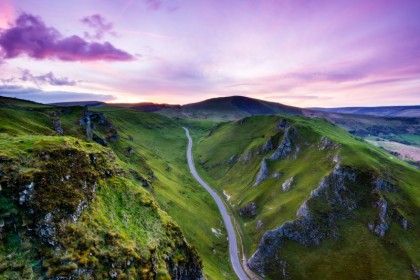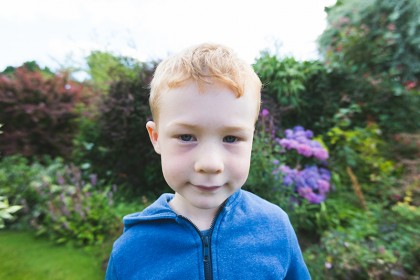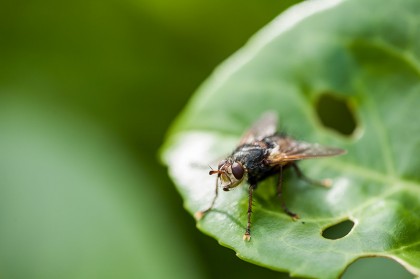Got a new camera? Here are 5 quick ways to take great photos with your kit lens
You don't need expensive glass to take great shots

Wondering how to take great photos with your new camera and its kit lens? Whether you’ve bought yourself a DSLR or been gifted a mirrorless model, you don’t need extra glass to get started: the bundled lens should be more than good enough to shoot excellent images right out of the box.
From fixed focal length primes to telephoto glass, the lens market is awash with options, yet the freebie kit lens is arguably the most versatile of them all – and there’s a good chance you’ve already got one.
These inexpensive starter lenses are designed to cover the key bases for beginners. They normally offer a decent zoom range, allowing you to experiment with relatively wide angles, as well as natural and short telephoto focal lengths, all without switching lenses. The standard DSLR spectrum is 18-55mm, while options are more varied for mirrorless equipment – though 14-42mm and 16-50mm are the most common.

Because they’re intended to be affordable all-rounders, kit lenses are inherently less specialized than premium glass. With maximum apertures usually limited to f/3.5-5.6, for example, they can’t challenge the depth of field performance of a prime lens, while only a dedicated telephoto option will let you get truly up close and personal with faraway wildlife.
That said, the beauty of bundled glass is its adaptability. As the ideas in the list below should show, kit lenses allow you to try all kinds of photography techniques without spending a penny extra. From portraits to landscapes to action, starter glass will help your photography grow – and if you find a discipline you love, you can always splash out on a specialist lens later.
So whether you’ve unboxed a mirrorless combo or a DSLR starter pack, follow these expert tips and you’ll soon discover the possibilities of the humble bundled lens.
- These are the world's best cameras for photography

1. Shoot landscapes like a pro
Landscape photography is one of the most popular genres, and your kit lens is perfect for taking fantastic scenic shots. All you need to do to get started is to set the focal length to its widest setting. This will give you a wide field of view; perfect for taking in an entire scene.
Sign up for breaking news, reviews, opinion, top tech deals, and more.
The next thing you'll need to do is set the camera to aperture-priority mode, which is done by turning the mode dial on your camera to to A (or Av on Canon cameras). This allows you to control the aperture and depth-of-field, while the camera automatically sets an appropriate shutter speed. Then set the aperture to the 'sweet spot' setting of f/11.

The sweet spot of the lens is the aperture at which a lens produces the best possible image quality and sharpness, and kit lenses perform very well at this setting or thereabouts. You can see for yourself by taking another shot at f/22 – the image will more than likely be a little soft.
As for your camera's ISO, you want to keep this as low as possible – ideally around ISO100. If you're going to be shooting at f/11 at ISO100, it's likely that you'll see the shutter speed drop, so to avoid camera shake we'd recommend using a tripod to keep your camera stable.
Now to set the focus. If you're using a DSLR, switch the camera to its Live View shooting mode, so rather than using the viewfinder you're using the rear screen.
Zoom into the image on the LCD screen so you are looking at a position that's one third of the distance into the scene and either move your focus area over it, or tap focus (available on most cameras now). Zoom back out of the image on screen and start shooting – you should find that you'll get your sharpest shots ever.
- Buying guide: These are the best tripods you can buy right now
- Learn more: The Exposure Triangle explained

2. Master light with long exposures
Long exposures are an easy way to capture dynamic and dramatic images, and most kit lenses can deliver great results. The technique is also a good way to get to grips with the key settings and capabilities of your new camera.
The first step is to find a steady base, because any camera shake will be evident on an exposure of several seconds. A tripod is the easiest way to do this, but that doesn’t mean you can’t shoot without one. From walls to benches to books, any flat surface will work as long as it’s stable. Use the self-timer to avoid wobble from your finger pressing the shutter.
Next, switch to manual mode. You’re looking to balance aperture, shutter speed and ISO to get a crisp long exposure, which will vary depending on the scene that you’re shooting.

Daylight long exposures can work well, letting you blur motion – think smoothed seas and ghostly crowds – or use narrower apertures to bring out detail in landscape shots. Most kit lenses are capable of f/22, which can reduce sharpness slightly but works as a substitute for a neutral density filter. Keep your ISO at 100 and experiment to find a shutter speed that doesn’t over-expose.
It’s at night where this technique really comes alive, though, from star trails arcing through the sky to streams of headlights in the city. Keep your ISO as low as you can to avoid excessive grain, but high enough to do something – the sweet spot is usually around 400 – while the right aperture should marry detail with light. An aperture of f/5.6 is a never a bad place to start.

Shutter speed depends on your situation. A cityscape at night could use just a second or two to bring out the zing in neon signs. Headlight trails might need 15-20s, while hills silhouetted by stars could require minutes – which means using bulb mode and keeping the shutter pressed, either by sticking something over the button or buying a remote release.
Experiment with framing, focal length and shutter speed. A wide shot at 18mm will emphasize the progress of objects from foreground to background, as you’ll see if you capture traffic from a bridge. Longer shutters speeds will rarely ruin the image, instead enhancing the brightness and detail. Trial and error is all part of the fun.
- These are the best ND filters you can buy right now

3. Capture fast-moving everyday action
Professional sports photographers might swear by sizable telephoto attachments, but you don’t need giant glass to capture action shots. With a fast shutter speed and some practiced panning, a standard kit lens is perfectly capable of freezing motion with dramatic effect.
You don’t need a sporting event to find a subject either: from pet dogs to passing traffic, there’s plenty of motion in everyday life – and the more regular it is, the more you’ll be able to perfect your technique.
Most cameras come with a preset sport mode, which provides an easy entry point for eager action photographers. The camera will automatically set a fast shutter speed to freeze the action, together with a medium-high ISO and wide aperture to maximize the available light.
Without touching the settings, you’ll be able to get a feel for timing as you follow a fast-moving subject. Start tracking your target before it enters the frame, then squeeze the trigger and pan as it passes. Such is the burst shooting and continuous autofocus performance of even entry-level DSLR and mirrorless models today that you should be able to bag impressive results right out of the box, with a bit of practice.

Kit lenses tend to have a maximum focal length of around 55mm. While that does restrict how close you can get to the action, it’s actually helpful when you’re learning the ropes: longer telephoto focal lengths make it trickier to keep a moving subject in the frame. And given the high resolution of modern sensors, you can always crop in on your subject later.
Once you’re comfortable with the basics, spin the dial to shutter priority for increased control. With aperture taken care of, you can experiment with the effect of shutter speed on motion blur. Shutter speeds of 1/2000 should freeze the action, though you’ll need bright conditions for the best results. Or try panning at a slower speed of 1/800, for an artfully dynamic image.
Your position relative to the subject is also important. The closer you are, the more swiftly you’ll need to pan as it passes, creating a greater sense of motion. Similarly, a shorter focal length can enhance the sense of motion filling the frame, which make for particularly striking images in busy urban settings. Try shooting the same subject up close at 18mm, then again from further away at 55mm and compare the results.
Your kit lens or camera body is likely to feature some form of image stabilization, which can help to reduce the effect of shake as you swivel – though for the fastest action you could consider adding a monopod to your accessory bag.

4. Take better portraits
When you're taking portraits with your kit lens there's a quick and easy way to instantly improve your shots. Turn the zoom ring until the lens is at the longest focal length, which on many kit lenses will be 55mm.
This focal length provides a comfortable distance between you and the model/subject, and reduces the risk of distorting their features by using a wide-angle focal length and getting too close.

Switch your camera to aperture-priority mode, which is usually represented by A or Av on the mode dial. Next, set the aperture to f/5.6 because this is usually the maximum aperture setting you can use when the camera is zoomed in to 55mm. This aperture combined with the focal length will give you the best chance of blurring the background so it's not distracting.
Now all you need to do is position your model a few meters in front of a plain background such as bushes, a fence or a wall. Then by moving position rather than zooming to frame your shot, you can compose your image and start shooting.

- Buying guide: These are the best Canon lenses you can buy right now
- Learn more: Essential tips to transform your portrait photography

5. Get closer to the natural world

To shoot great close-up shots of flowers and insects, don't you need a dedicated macro lens or other specialist accessories? The honest answer here is 'not necessarily'. While a kit lens alone won't get you all that close to the minutiae of the natural world, a simple and inexpensive accessory will transform it into a macro lens.
Reversing rings have a lens bayonet mount on one side, and a filter thread on the other. This allows you to screw the ring onto the front of your lens, and then to attach it to the camera backwards using the lens mount on the other side.
One of the problems with using a reversing ring with a kit lens is that without taking advantage of a simple trick while the lens is mounted backwards, the aperture will remain wide open and depth-of-field will be incredibly shallow (there won't be much of the subject in sharp focus). So here's how to get it working with your new camera.
How to use a reversing ring with Canon kit lenses
Mount the kit lens on your camera the normal way, with the reversing ring attached to the front, and in aperture-priority mode set the aperture to f/8. Now hold down the depth-of-field preview button and keep it held down while pressing the lens release button and twist the lens to remove it.
The aperture will now be set at f/8, and you can re-attach the lens to the camera by the reversing ring. This trick may also work for other camera brands, but not Nikon kit lenses.
How to use a reversing ring with Nikon kit lenses
With a Nikon kit lens simply attach the reversing ring to the front of the lens, and attach the lens backwards using the bayonet mount on the reversing ring. With the rear lens element facing outwards you'll see a mechanical lever – this controls the aperture. Now by moving the lever and holding it in position, around the centre of its travel, you will have aperture set to roughly f/8. The downside is that you have to hold it in position while shooting.
Setting the focal length of the lens to 18mm allows you to focus closer to the subject for a close to macro shot. While 55mm will allow you to focus further away for a close-up, but not a macro shot. To focus simply move the camera backwards and forwards slightly until the image looks sharp in the viewfinder.

- Buying guide: These are the best macro lenses you can buy right now
- Learn mode: Macro lenses: how to choose one, and how to use it

A final word on kit lenses
To say that a kit lens is a jack-of-all-trades and a master of none is a tad unfair. They are versatile and not aimed at one or two specific types of photography. But by simply taking a little more control and thinking about the camera and lens settings you're using, they can be great for many subjects.
Next time you're out shooting give the techniques we've looked at here a try, and you're sure to see an instant improvement in your landscapes, portraits, action and close-up photography.

- 9 things you need to know about prime lenses
- Best Nikon lenses: 20 top lenses for Nikon DSLRs

Phil Hall is an experienced writer and editor having worked on some of the largest photography magazines in the UK, and now edit the photography channel of TechRadar, the UK's biggest tech website and one of the largest in the world. He has also worked on numerous commercial projects, including working with manufacturers like Nikon and Fujifilm on bespoke printed and online camera guides, as well as writing technique blogs and copy for the John Lewis Technology guide.